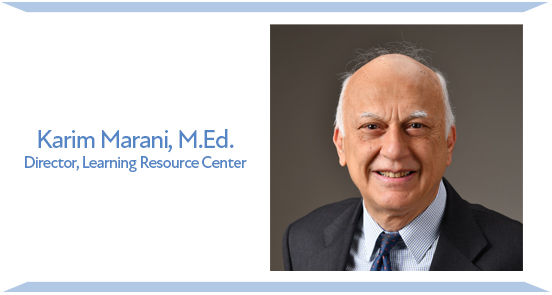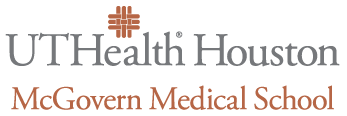October 07, 2020
 When did you join UTHealth? What brought you here? When did you join UTHealth? What brought you here?
It was June 15, 1973, when I walked into John Freeman Building looking for the Program in Biomedical Communications and ran into Dr. Cheves Smythe. He graciously guided me to Center Pavilion Hospital. Little did I envisage at the time that this was the beginning of over 45 years of transformational growth and development in my career at McGovern and of UTHealth’s quantum leap to where it is today.
I heard about UT Medical School at Houston while attending a conference of educational technologists in Las Vegas. The new school was recruiting audiovisual specialists and instructional developers. In his offer letter, Dr. Malcolm Skolnick, director of Biomedical Communications, summarized my role as: “manage the audiovisual functions of the new medical school and work as a team member in the development of self-instructional materials.” The notion of self-instruction was a shift from lecture-dominated teaching and learning paradigm to students also taking responsibility for learning on their own.
Coming to Houston heralded a new epoch for me and my wife, that of safe haven in the USA. We had journeyed from Uganda (East Africa) to New Mexico in 1971 to pursue further studies. At the time, Uganda’s President Idi Amin Dada’s dictatorial regime was descending into anarchy. There were unspeakable atrocities committed upon its citizens. In one particularly callous act, he announced expulsion of Asians from the country, stripped them off their birthright citizenship, worldly possessions, and gave them 90 days in which to leave the country. Thus, when we arrived in Houston, we had become “stateless.” Gratefully, the USA granted us much more than asylum, it gave us safety and security while UTHealth rewarded us with opportunities to build lasting careers.
Tell me about your work history here.
A start-up medical school offered opportunities to embrace new ideas and emerging audiovisual technologies, and the nascent medical school was already receptive. In those early years, we remained resilient and adaptable while the school’s academic structures transitioned from programs to departments. The size of students, faculty, and staff increased in quick succession, curriculum stretched from 3-to 4 years, and construction of the medical school building fast tracked. Some natural disasters came in the way, too. Several spectacular storms resulted in damage to property and maybe some loss of momentum, but the medical school and UTHealth persevered, picked up the pieces, and rebuilt so that we became stronger.
My tenure began in division of Instructional Media under the Program in Biomedical Communications along with other units such as Information Systems, Photography, Graphics, TV and Audiovisual Operations. Our growth paralleled with advances in audiovisual technology and accelerated with advent of the Internet and personal computers. We went through many incarnations of innovations that required frequent adjustments to equipment, furniture, fixtures, and space layout. The entire realm of audiovisual technology transformed from lantern glass slides, overhead transparencies, and microfiche images to 2×2 slides; from 16 mm films to a dazzling array of new video formats. Development of digital platforms forever changed the audiovisual and teaching-learning landscape.
The Internet, WWW, and IBM Model 5150 desktop computer ushered dramatic shifts in medical education. The steady developments in equipment, devices, brands, and operating systems often made rationalization of what to adopt difficult. Although today’s dazzling array of sleek desktops, laptops, tablets, smart phones, and interactive monitors are omnipresent, one remains alert in anticipation of what further advances may be on the horizon.
What are you most proud of accomplishing?
Accomplishments are attributable to team effort. In key developments, LRC reaches out to and collaborates with higher-ups, colleagues, faculty, staff, students, and entities within McGovern and UTHealth. The student body and LRC Student Advisory Committee have been particularly instrumental in influencing key developments in LRC.
As the school’s organization structure evolved, units under Biomedical Communications became decentralized. Functions such as instructional resources, reference and circulation services, space configuration for study and Computer Lab fell under Learning Resource Center. We were one of the first ones to adopt this concept, including 24/7 access to study spaces, and promoted it at annual meetings of the AAMC and MLA and welcomed visitors from area institutions to tour our facilities.
Space design took into consideration students’ preferences and curricular requirements for students to study individually, collaboratively, in small-group interactive sessions, including PBL. We added more space by designing and furnishing a 24/7 satellite LRC at LBJ Hospital for third- and fourth-year students on clinical rotations. IT support for students was reinforced as school’s instructional offerings increasingly integrated the use of computers. LRC Art Gallery became operationalized to display students’ creative and artistic works, and recently, prime space was carved from the LRC to construct a Student Lounge, making LRC convenient one-stop for students’ educational and leisure pursuits.
In earlier days, the dean of UTHealth’s School of Allied Health Sciences provided an opportunity to serve as volunteer lecturer in its Program in Biomedical Communications and the Houston Academy of Medicine-Texas Medical Center Library offered a position of adjunct librarian. Presently, LRC is working with TMC Library to help students acquire information literacy skills and competencies to be able to discern credible sources of information, manage an exponentially growing body of medical literature, and effectively engage in life-long continuing education pursuits. TMC Library librarians come into school’s Leather Lounge, one day a week, to personally interact with students.
There were opportunities for outreach as well. During Dr. Cheves Smythe’s tenure at the Aga Khan University’s Medical College in Pakistan, he invited us to design the new medical college’s audiovisual and medical library facilities. Subsequently, we also volunteered at the Aga Khan Development Network’s internationally chartered University of Central Asia, with campuses in Tajikistan, Kyrgyzstan, and Kazakhstan and worked on the university’s integrated library system across its three campuses.
How has the university changed since you first joined?
It began as a smaller organization with leaner faculty, staff, and students. We worked with one another closely, within and across programs, participated in leisure activities, played volleyball, went on picnics, and built lasting friendships. Parking was less expensive and finding space to park was not a huge issue nor did we have to endure congested freeways.
Why have you stayed?
First, because change is a constant, it keeps one motivated and challenged. There are several other reasons. The opportunity to work with every dean the school has had and to align LRC’s goals with school’s overall strategic direction. Energy from every incoming and graduating class and its rejuvenating effect, seeing each cohort getting younger, smarter, tech savvy, respectful, and diverse. Close working relationship with each successive higher ups, including Dr. Malcolm Skolnick, Dr. John Ribble, Dr. Frank Simon, Dr. George Stancel and now, Dr. Patricia Butler; each of whom provided us with support, guidance, and an enabling environment in which to forge ahead. In particular, Dr. Butler’s benevolent oversight, and although she sets high standards and expects meritorious performance, she leads us with her intrinsic ethic of kindness, generosity, and humility.
When you are not at work, how do you spend your time?
Perform volunteer work in the community. Engage in discourses of Baker Institute for Public Policy at Rice University, a nonpartisan think tank devoted to critical review of national and international issues. Enjoy Rice University Shepherd School’s magnificent musical performances. Listen to enchanting Indian classical ragas, sitar concerts, and tabla percussions, and reverberating beat of ngoma (East African drum). Stay fit and workout regularly; initial motivation for which came from the gym and squash courts on top of McGovern Medical School Building, which unfortunately no longer exist.
|


 When did you join UTHealth? What brought you here?
When did you join UTHealth? What brought you here?